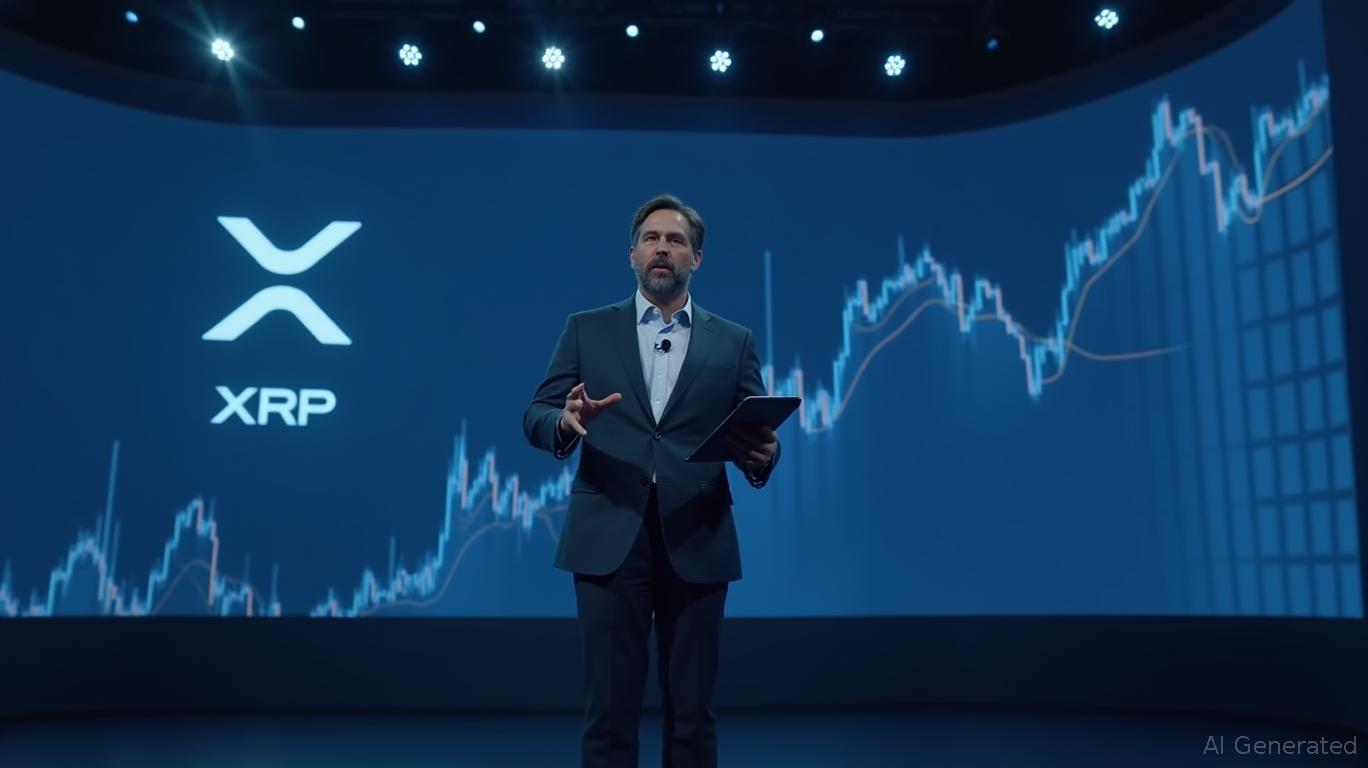XRP News Today: Ripple CEO Projects XRP to Handle 14% of SWIFT Volume in Five Years
During the APEX 2025 developer summit, Ripple CEO Brad Garlinghouse made a bold statement, asserting that XRP, the
developed by Ripple, has the potential to handle up to 14% of the total volume processed by the Society for Worldwide Interbank Financial Telecommunication (SWIFT) within the next five years. This projection underscores Ripple's confidence in the scalability and efficiency of the XRP Ledger (XRPL), which is designed to facilitate fast and cost-effective cross-border payments.Experts have delved into the mathematics behind this claim, analyzing the current transaction volumes and the capabilities of the XRPL. According to the analysts' forecast, if XRP were to process 14% of SWIFT's volume, it would need to handle trillions of dollars in transactions annually. This would require significant advancements in the XRPL's infrastructure and widespread adoption by
globally. The current capabilities of the XRPL, including its transaction speed and low fees, position it as a strong contender in the cross-border payment market. However, achieving this level of volume would necessitate overcoming regulatory hurdles and gaining the trust of major financial players.Crypto expert and commentator Crypto Eri offered a grounded view of how much XRP would be needed to handle a $4.2 trillion annual volume, representing just a fraction of SWIFT’s total, under conservative assumptions. Based on a token price of $2.15 and an average transaction cycle of three minutes for liquidity management, the calculation estimates that 11.15 million XRP could facilitate that volume, amounting to only 0.0190% of the 58.82 billion circulating supply. The key factor underpinning this conclusion is high token velocity. If each XRP is reused every three minutes, that enables up to 480 bridge transactions per day per token.
However, this high-frequency assumption is theoretical and rarely mirrored in actual market conditions. Another contributor, responding to Eri’s model, elaborated on the practical realities of using XRP as a bridge asset. If liquidity recycles more slowly, for instance, at 100 or even 50 transactions per day, the price of the asset must increase significantly to maintain the same transaction capacity. The example given shows that at only 50 transactions per day, XRP would need to be priced at approximately $20.64 to handle the same $4.2 trillion throughput. At 10 daily transactions, the price would have to hit $103.20. This shift shows how reduced velocity increases demand per token, exerting upward pressure on price.
XRP settles in 3 to 5 seconds, but real-world frictions, such as uneven transaction flow, regulatory delays, and fiat off-ramps, limit effective reuse, forcing liquidity providers to hold extra XRP and reducing practical turnover despite automation. However, XRP is still significantly faster than SWIFT and similar legacy systems, leading to louder calls for the adoption of the digital asset as a SWIFT replacement. If XRP is to support a sizable share of global payment volume, the required price depends less on how quickly and efficiently each token can be cycled through the system.
The potential impact of XRP handling 14% of SWIFT's volume is substantial. It would not only validate the technology behind XRP but also challenge the dominance of traditional financial networks. The efficiency and cost savings offered by XRP could make it an attractive option for banks and financial institutions looking to streamline their cross-border payment processes. However, the path to achieving this goal is fraught with challenges, including regulatory compliance and competition from other digital assets and payment networks.
In summary, while the projection of XRP handling 14% of SWIFT's volume is ambitious, it highlights the potential of blockchain technology in transforming the financial landscape. The success of this endeavor would depend on Ripple's ability to scale its infrastructure, navigate regulatory environments, and secure partnerships with key financial institutions. The coming years will be crucial in determining whether XRP can live up to its potential and reshape the future of cross-border payments.


Comments
No comments yet